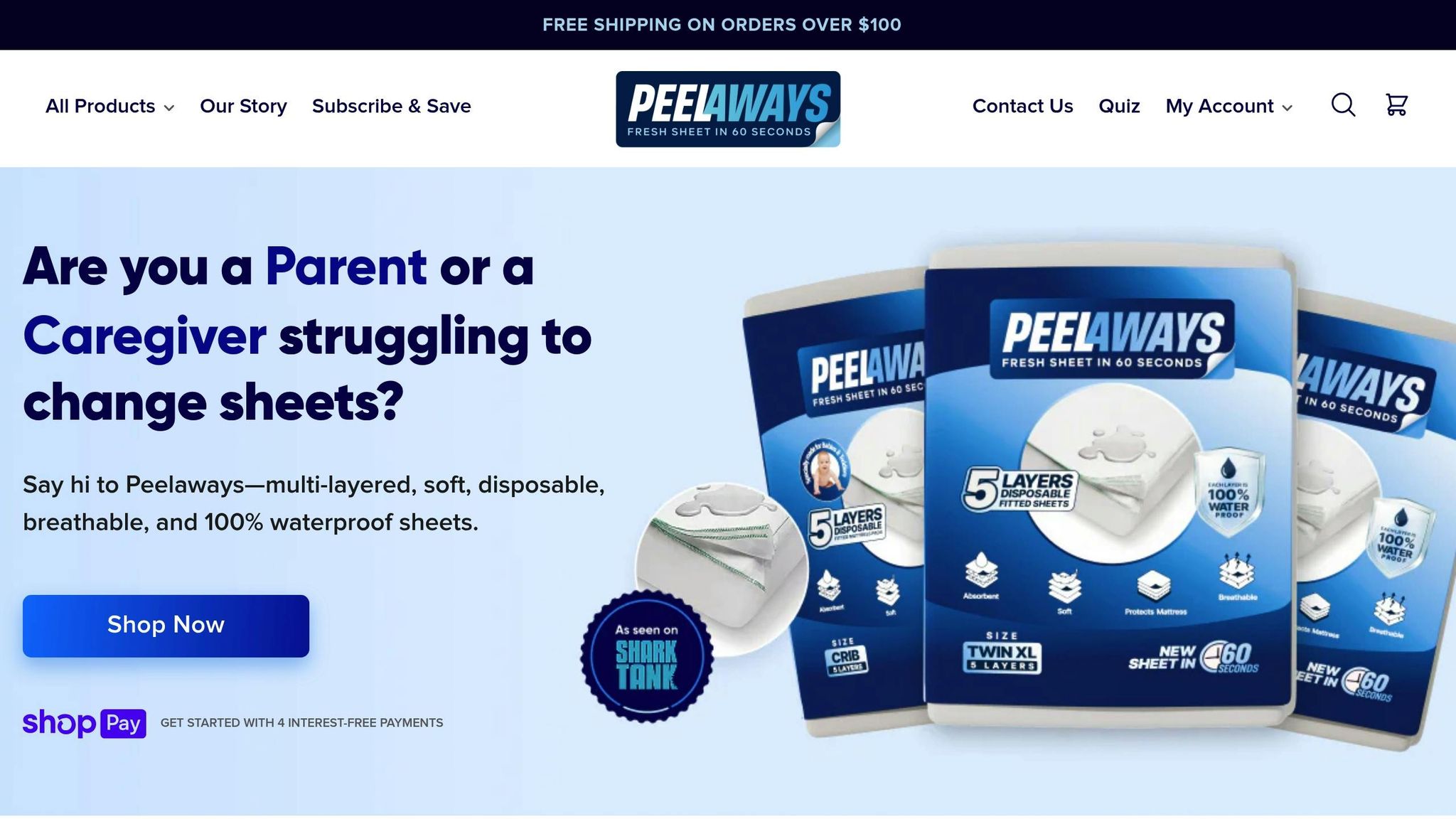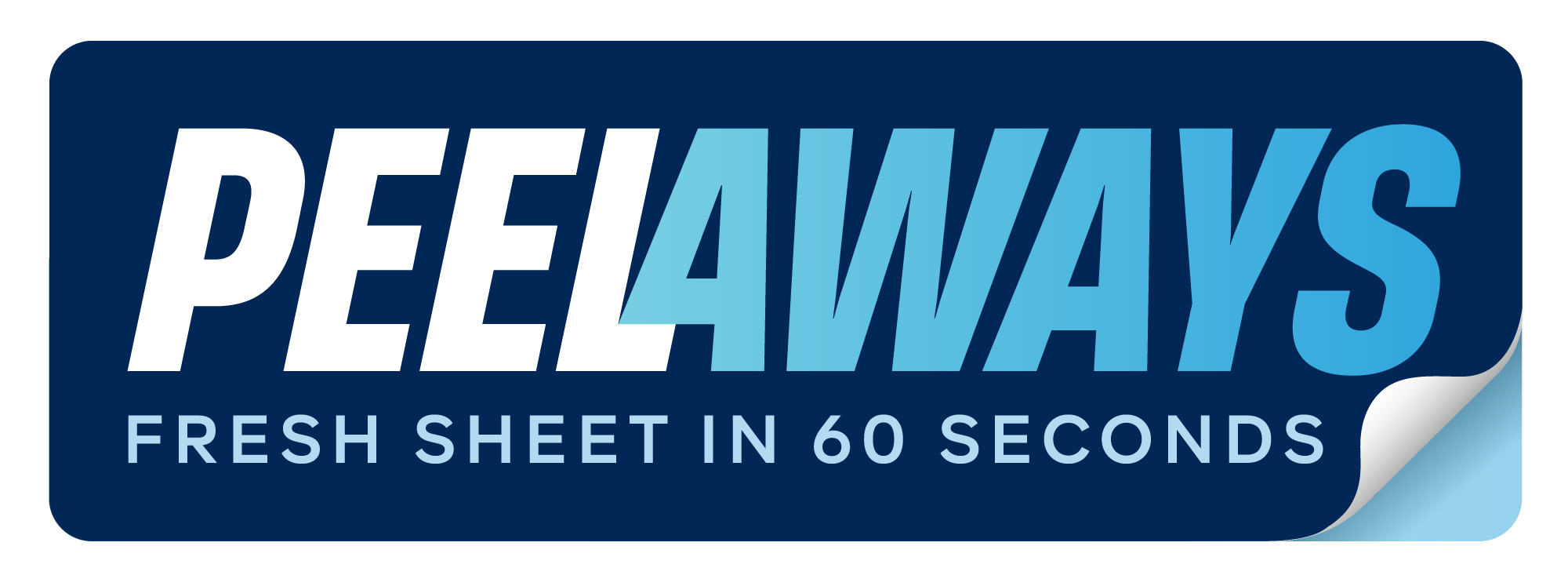Managing Incontinence Across Cultures: Key Insights

Incontinence affects millions globally, but cultural norms heavily influence how it’s managed. Many communities view it as a private issue, creating barriers to seeking care. For example, modesty in some Asian and Middle Eastern groups limits open discussions, while older Sikh women in Canada may avoid addressing it with professionals.
Key challenges include:
- Stigma: Incontinence is often seen as shameful, discouraging help-seeking.
- Caregiver Burden: Families rely on home-based methods like reusable cloths, which can be labor-intensive.
- Hygiene Risks: Traditional methods may lack proper protocols, increasing infection risks.
- Access Issues: Language barriers and lack of awareness about modern solutions hinder care.
Modern products like PeelAways disposable waterproof sheets address these challenges by offering:
- Quick, discreet sheet changes to maintain privacy.
- Reduced caregiver strain by eliminating washing.
- Improved hygiene with single-use layers that prevent cross-contamination.
Balancing respect for cultural practices with modern solutions can improve care outcomes while preserving dignity and privacy.
1. Traditional Care Methods and Beliefs
Flexibility Across Cultures
The way incontinence is managed varies widely among cultural communities, with practices often rooted in long-standing beliefs about health, family roles, and medical care. In many cultures, incontinence is seen as a private matter rather than a medical condition.
For instance, in some Asian and Middle Eastern communities, family caregivers - most often women - take on the responsibility of care using home-based methods and cloth-based solutions. These can include frequent washing routines, herbal remedies, and reusable materials like cloth pads. Family networks usually serve as the primary support system, with cultural traditions often taking precedence over standardized medical approaches[2][6].
Language barriers further complicate access to modern care. Educational materials in native languages are often unavailable, leaving families reliant on familiar, traditional methods rather than exploring potentially more effective modern options[2].
Impact on Privacy and Dignity
Cultural values surrounding modesty and privacy play a significant role in shaping how incontinence care is delivered. These values often influence decisions about care, with personal dignity being a central concern[3].
Gender-specific preferences are particularly notable in many cultures, where same-gender caregivers are considered essential. This requirement can limit access to professional care, as family members are often preferred over outside help. As a result, medical intervention may be delayed, and families may continue to rely on less effective traditional methods[2][3].
The stigma attached to incontinence in some communities can also lead to psychological distress, with individuals experiencing feelings of shame or self-blame. This stigma often discourages open discussions or seeking assistance, further isolating those affected and perpetuating reliance on secrecy over effective care[3].
Ease of Implementation
Traditional incontinence care often appeals because it relies on readily available household items and familiar routines. At first glance, these methods may seem simple and convenient. However, over time, they can place a heavy burden on families and caregivers.
For example, washing reusable cloth materials frequently adds to the workload of caregivers, often women, who are already managing other responsibilities. This can make the process time-intensive and exhausting[2][6]. Additionally, the lack of standardized practices means that the effectiveness of these methods can vary greatly from one household to another, leading to frustration and inconsistent results without professional guidance.
Hygiene and Cross-Contamination Prevention
While traditional methods often use household items, they can lack proper hygiene protocols, increasing the risk of cross-contamination if not cleaned thoroughly[2][6]. Without efficient infection control measures, these practices can inadvertently create health risks.
For instance, improper cleaning and storage of reusable materials can promote bacterial growth, raising the likelihood of skin infections or urinary tract infections. Family caregivers, though well-meaning, may unknowingly compromise the health of those they care for due to limited access to proper sanitization methods or an understanding of contamination risks[6].
Although frequent washing is a positive aspect of some cultural practices, it may not fully address the hygiene challenges associated with incontinence. Traditional cleaning routines, while culturally significant, often need to be supplemented with modern hygiene techniques to ensure better health outcomes[2][5]. Modern solutions are increasingly being developed to bridge this gap, offering ways to integrate cultural values with improved hygiene standards.
2. PeelAways Disposable Waterproof Sheets

Flexibility Across Cultures
PeelAways sheets are designed to fit seamlessly into various care settings, ensuring they don’t disrupt family routines. Thanks to their peel-away layers, caregivers can remove soiled sheets quickly without needing to lift the mattress. This feature is particularly beneficial in settings where privacy and minimal disruption are deeply valued[2].
These sheets also address the challenges faced in communities with specific cultural practices or logistical hurdles by eliminating the need for traditional washing. With prices ranging from $30.99 (Crib-A-Peel) to $53.99 (King), they cater to a variety of care scenarios and living arrangements.
The straightforward design requires no specialized training or equipment, making it accessible to caregivers from diverse backgrounds. The peel-away functionality simplifies the process, helping overcome potential language barriers within multicultural care teams. This ease of use not only reduces caregiver stress but also ensures that privacy and dignity are preserved during care[2].
Impact on Privacy and Dignity
PeelAways have been thoughtfully designed to respect cultural sensitivities. These waterproof sheets can be discreetly placed under regular bedding, maintaining the natural feel of the mattress while ensuring silence during use. This subtle integration supports incontinence management in a way that prioritizes privacy and modesty[1].
Sheet changes can be completed in under a minute without the need to strip the entire bed, significantly minimizing exposure time and physical handling. The waterproof layers effectively prevent leaks and odors, eliminating visible signs of accidents that could lead to embarrassment[1].
Additionally, the multi-layer design allows individuals to handle accidents independently when possible, promoting a sense of autonomy. This feature helps reduce the emotional stress often tied to incontinence and fosters a more dignified daily routine[1][3].
Ease of Implementation
PeelAways simplify daily care routines by removing the need for time-consuming washing. Each sheet includes 5–7 layers (e.g., Twin XL priced at $41.99) and offers a 15% discount for subscriptions, along with free shipping for orders over $100. The fitted design ensures they work with standard mattresses, making them easy to implement in any setting[2].
Hygiene and Cross-Contamination Prevention
Hygiene and cleanliness are central to the PeelAways design. The single-use, peel-away layers reduce the risk of cross-contamination by eliminating the need to handle or transport soiled linens through shared spaces. This feature is especially valuable in multigenerational homes and communal care environments[2].
Each layer provides a fresh, clean surface, ensuring consistent hygiene. The waterproof barrier prevents seepage, reducing the risk of bacterial growth. Made with chemical-free, biodegradable materials, PeelAways also address concerns about synthetic ingredients and waste, aligning with the preferences of communities mindful of environmental and health considerations[2].
Conversations: Aged Care Series - Webinar 4 Understanding Continence
sbb-itb-45288fe
Pros and Cons
When comparing traditional incontinence care methods with modern solutions like PeelAways, it’s clear that each approach has its own strengths and challenges. Here's a closer look at how they stack up in different areas:
| Aspect | Traditional Care Methods | Modern Solutions (PeelAways) |
|---|---|---|
| Cultural Flexibility | Aligns well with long-standing cultural norms and family traditions but may perpetuate stigma and limit access to better care options[2] | Initially may not fully align with cultural modesty preferences, but offers a hygienic and neutral option that can be adapted with sensitivity[2] |
| Privacy & Dignity | Emphasizes modesty and family involvement but may lack privacy in shared living spaces | Allows for discreet care changes, reducing exposure time and physical handling |
| Hygiene & Cross-Contamination | Requires frequent washing of soiled sheets, with risks of seepage, lingering odors, and bacterial growth | Single-use layers prevent cross-contamination and bacterial buildup from reused materials |
| Ease of Implementation | Involves stripping, washing, drying, and remaking beds, which can be physically taxing for caregivers | Simplified peel-away design reduces effort and eliminates the need for detailed instructions |
| Cost Considerations | Lower initial costs with reusable items but higher ongoing labor and utility expenses | Higher per-use cost ($30.99–$53.99 depending on size) but offsets costs with time and labor savings |
Traditional care methods often reflect the cultural importance of family-centered care, especially in communities where incontinence is seen as a private family matter. However, these methods can isolate families from external resources and place heavy physical and emotional demands on caregivers.
Modern solutions like PeelAways address some of these challenges by offering privacy and hygiene benefits that are particularly valuable in multigenerational households. For example, Stephanie Jackson, a verified user, shared her experience:
"After I peeled away the top layer, nothing seeped through - not even a smell."
This focus on hygiene and convenience resonates with users. Ronda, another user, highlighted:
"No more scrubbing, no more smell, and no more embarrassment."
However, disposable products can sometimes be seen as wasteful in certain cultures, requiring education and engagement with community leaders to encourage acceptance[2]. Kalahiki Jr Samuel noted the practical advantages:
"It is more convenient to use than sheets, less washing, just peel off the soiled layer and throw out."
A balanced approach often works best - combining the convenience and hygiene benefits of modern solutions like PeelAways with traditional practices that honor cultural values around dignity and family involvement. This blend can meet caregiving needs while respecting the personal and cultural sensitivities that make incontinence care unique across different communities.
Conclusion
Providing effective incontinence care across diverse cultural settings requires a careful balance between respecting traditional practices and introducing modern, hygienic solutions. With over 25 million adults in the U.S. experiencing some form of incontinence, and care-seeking behaviors varying widely among racial and ethnic groups, culturally sensitive approaches are more important than ever[7][4].
At the heart of success is building trust and understanding cultural nuances. Stigma and traditional hygiene practices often create barriers, especially when incontinence is viewed as a social issue rather than a medical condition[2]. Caregivers who take the time to engage with community leaders, offer multilingual education, and honor individual preferences can help bridge these divides.
Modern tools, like PeelAways disposable waterproof sheets, are instrumental in these efforts. Their multi-layer, peel-away design provides practical benefits that resonate across cultural lines - minimizing caregiver strain, preserving privacy, and reducing cross-contamination. These features are particularly valuable in multigenerational households, where traditional laundering methods may be impractical or where discretion is highly valued.
To integrate these insights effectively, caregivers must respect cultural traditions while introducing proven care strategies. This includes using interpreters, visual aids, and culturally tailored education to overcome language and cultural barriers. By involving community leaders and presenting products like PeelAways with cultural awareness, caregivers can improve acceptance rates and foster trust[2][7].
Cultural competence and trauma-informed care are essential. What works in one community may need adjustment for another, and building rapport often takes precedence over introducing new tools or routines. The goal is not to replace traditional practices, but to complement them with solutions that make care more hygienic, manageable, and dignified for everyone involved.
Ultimately, effective incontinence care is rooted in universal principles of dignity and respect. By combining cultural awareness with practical innovations like PeelAways, caregivers can create supportive environments that honor diverse traditions while delivering better outcomes for individuals and families managing incontinence.
FAQs
How do cultural values and traditions shape the way incontinence is managed in different communities?
Cultural values and traditions heavily influence how incontinence is perceived and addressed within different communities. Beliefs surrounding hygiene, privacy, and caregiving roles often shape the approaches and tools chosen for care.
For example, in communities where cleanliness and convenience are highly valued, products like multi-layered, disposable bed sheets can make caregiving easier while ensuring hygiene standards are met. Recognizing these cultural differences allows caregivers to offer support that is both respectful and aligned with the preferences and needs of individuals.
How can PeelAways disposable waterproof sheets support caregivers in culturally diverse care settings?
PeelAways disposable waterproof sheets offer a practical option for caregivers navigating diverse cultural settings. Their innovative multi-layer design allows caregivers to simply peel away a soiled layer, making the process of changing bed sheets quicker and more hygienic. This reduces the physical strain of heavy lifting and cuts down on frequent laundry, which can be a game-changer when providing incontinence care while respecting different cultural practices that emphasize dignity and cleanliness.
Beyond convenience, these sheets serve as a protective barrier for mattresses, safeguarding them from spills and accidents. This added protection is especially useful in environments where cultural traditions may shape how incontinence care is managed, giving caregivers a dependable and easy-to-use tool to maintain a clean and sanitary sleeping space.
How can caregivers combine traditional practices with modern tools to provide respectful and effective incontinence care?
Caregivers can strike a balance by honoring long-standing traditions while embracing modern tools that make care simpler and preserve dignity. For instance, multi-layered disposable bed sheets are a practical option for managing incontinence. They minimize the need for constant laundry, reduce the hassle of handling mattresses, and help lower the risk of cross-contamination.
By combining time-tested approaches with newer solutions, caregivers can deliver care that's both effective and compassionate, ensuring the well-being of the individual while making day-to-day tasks more manageable.
Related Blog Posts
- Study: Impact of Dignity in Incontinence Care
- Why Respect Matters in Incontinence Conversations
- Best Certification Programs for Incontinence Care Training
- Ultimate Guide to Emotional Care in Incontinence Management
Comments
0

SAVE MONEY & WATER
Professionals & Institutions save a fortune on labor/laundry.

SUPERIOR COMFORT
The first thing our customers notice is how soft our sheets are.

100% WATERPROOF
Each layer is 100% Waterproof, perfect for spills and accidents

SAVE TIME
Change the sheet in under 1 minute without stripping the bed.




Leave a comment